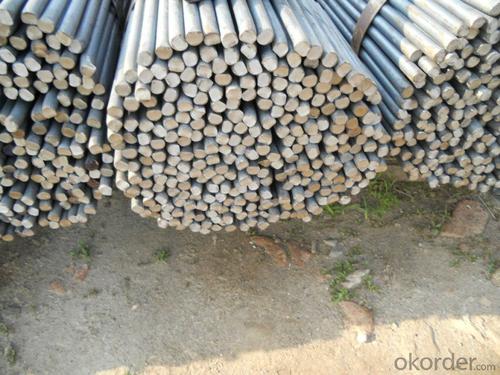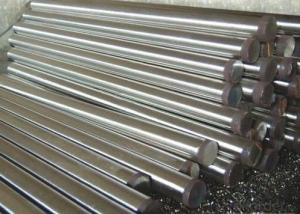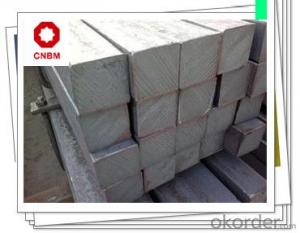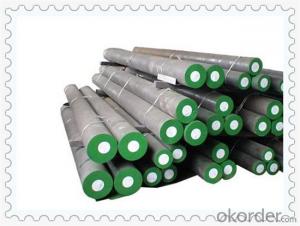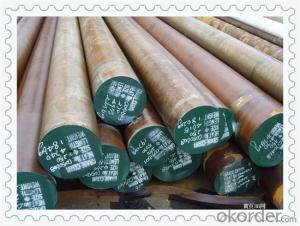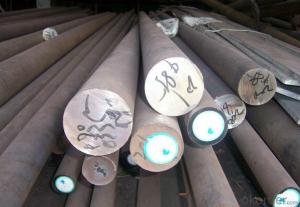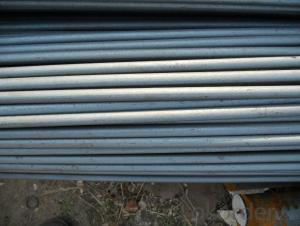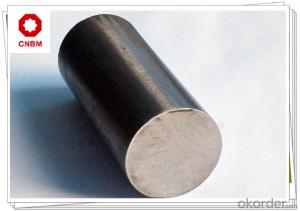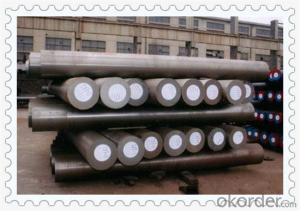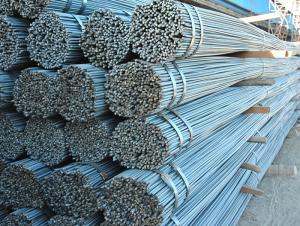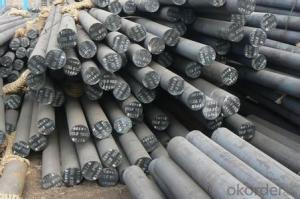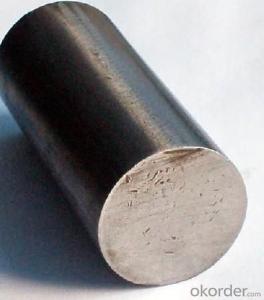Round Bar Chromed Steel Round Bar-Steel Round Bar SS400
- Loading Port:
- Tianjin
- Payment Terms:
- TT OR LC
- Min Order Qty:
- 25 m.t.
- Supply Capability:
- 20000 m.t./month
OKorder Service Pledge
OKorder Financial Service
You Might Also Like
Specification
Product Description:
OKorder is offering High quality Round Bar Chromed Steel Round Bar-Steel Round Bar SS400 at great prices with worldwide shipping. Our supplier is a world-class manufacturer of steel, with our products utilized the world over. OKorder annually supplies products to European, North American and Asian markets. We provide quotations within 24 hours of receiving an inquiry and guarantee competitive prices.
Product Applications:
Round Bar Chromed Steel Round Bar-Steel Round Bar SS400 are ideal for structural applications and are widely used in the construction of buildings and bridges, and the manufacturing, petrochemical, and transportation industries.
Product Advantages:
OKorder's Round Bar Chromed Steel Round Bar-Steel Round Bar SS400 are durable, strong, and resist corrosion.
Main Product Features:
· Premium quality
· Prompt delivery & seaworthy packing (30 days after receiving deposit)
· Corrosion resistance
· Can be recycled and reused
· Mill test certification
· Professional Service
· Competitive pricing
Product Description:
Specifications of High Quality Round Bar
1. Grade: GB, JIS, ASTM, EN
2. Grade: Q235, SS400, A36, S235JR
3. Diameter and mass: As below
Diameter | Mass | Diameter | Mass | Diameter | Mass |
(mm) | (kg/m) | (mm) | (kg/m) | (mm) | (kg/m) |
6 | 0.22 | 22 | 2.98 | 53 | 17.30 |
7 | 0.30 | 24 | 3.55 | 56 | 19.30 |
8 | 0.40 | 25 | 3.85 | 60 | 22.20 |
9 | 0.50 | 26 | 4.17 | 63 | 24.50 |
10 | 0.62 | 28 | 4.83 | 65 | 26.00 |
11 | 0.75 | 30 | 5.55 | 70 | 30.20 |
12 | 0.89 | 32 | 6.31 | 75 | 34.70 |
13 | 1.04 | 34 | 7.13 | 80 | 39.50 |
14 | 1.21 | 36 | 7.99 | 85 | 44.50 |
15 | 1.39 | 38 | 8.90 | 90 | 49.90 |
16 | 1.58 | 40 | 9.86 | 95 | 55.60 |
17 | 1.78 | 42 | 10.90 | 100 | 61.70 |
18 | 2.00 | 45 | 12.50 | 120 | 88.85 |
19 | 2.23 | 48 | 14.20 | 140 | 120.93 |
20 | 2.47 | 50 | 15.40 | 150 | 138.82 |
4. Material: Mild Steel
5. Heat treatment of high quality steel:
Fire: Isothermal annealing temperature is 800 ~ 880 °C, with 10 ~ 20 °C, the furnace cooling to about 600 °C, hardness above HB269.
Preheat temperature: 730-730 °C
Quenching temperature: 1190-1210 °C
Tempering temperature: 540-595 °C
Cold drawn, hardness 285 HBS
Cold drawn after annealing condition, hardness 277 HBS
Quenching methods: oil quenching, air cooling or salt bath quenching
Production Flow of High Quality Round Bar
The common processes are preheated forging quenching, dual refinement solution process, cooling quenching and isothermal quenching. We use heat treatment for dual refinement solution process. The main measures process is high temperature solution and refinement cycle. High temperature solution can improve the carbide morphology and particle size. The aim is to make the loop refinement ultrafine austenite grains.
FAQ:
Q1: Why buy Materials & Equipment from OKorder.com?
A1: All products offered byOKorder.com are carefully selected from China's most reliable manufacturing enterprises. Through its ISO certifications, OKorder.com adheres to the highest standards and a commitment to supply chain safety and customer satisfaction.
Q2: How do we guarantee the quality of our products?
A2: We have established an advanced quality management system which conducts strict quality tests at every step, from raw materials to the final product. At the same time, we provide extensive follow-up service assurances as required.
Q3: How soon can we receive the product after purchase?
A3: Within three days of placing an order, we will begin production. The specific shipping date is dependent upon international and government factors, but is typically 7 to 10 workdays.
Images:
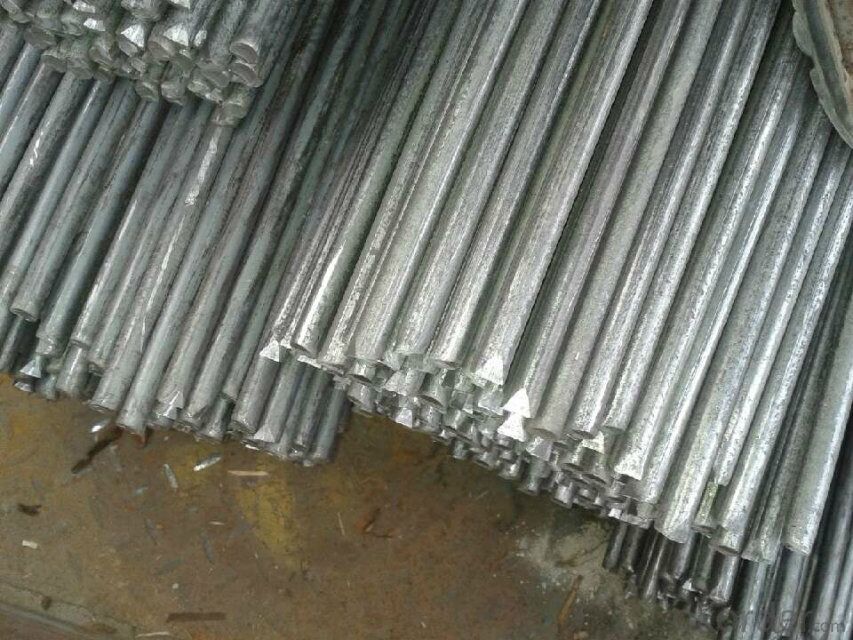
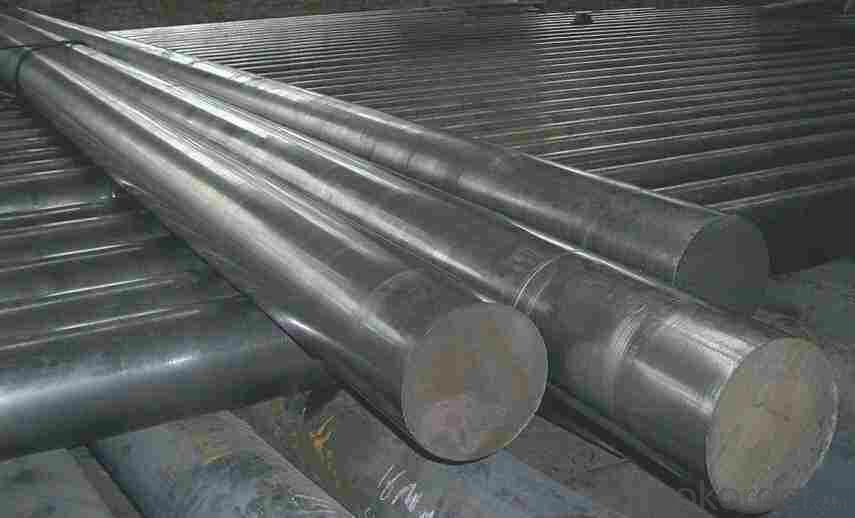
- Q: How about tempering No. 45 round bar?
- Quenching and tempering is the double heat treatment of quenching and high temperature tempering, the purpose is to make the workpiece have good comprehensive mechanical properties.
- Q: Can steel round bars be used for making fencing?
- Yes, steel round bars can be used for making fencing. Steel round bars are commonly used in fencing applications due to their strength, durability, and resistance to corrosion. They provide a sturdy framework for fences and can be easily welded or attached to other fencing materials.
- Q: What are the different types of steel round bar alloys?
- There are several different types of steel round bar alloys, including carbon steel, stainless steel, alloy steel, and tool steel.
- Q: Can steel round bars be painted?
- Yes, steel round bars can be painted. Painting steel round bars can help protect them from corrosion and enhance their appearance. However, before painting, the surface of the steel round bars should be properly prepared by cleaning, degreasing, and removing any rust or mill scale. This can be done using methods such as sandblasting, wire brushing, or chemical cleaning. Once the surface is adequately prepared, a primer specifically designed for steel should be applied to promote better adhesion of the paint. Finally, the desired paint can be applied to the steel round bars using brushes, rollers, or spray equipment. It is important to choose a paint that is suitable for outdoor use and provides sufficient protection against harsh weather conditions. Regular maintenance and periodic repainting may be required to ensure the longevity and durability of the painted steel round bars.
- Q: Can steel round bars be welded?
- Yes, steel round bars can be welded. Welding is a common method used to join steel round bars together. The process involves heating the steel bars to a high temperature and applying pressure to fuse them together. This allows for the creation of strong and durable connections between the steel round bars. However, it is important to ensure that the appropriate welding techniques and equipment are used to achieve a high-quality weld.
- Q: What are the tolerances for steel round bars?
- The tolerances of steel round bars can differ based on the specific requirements of the application and manufacturing process. Generally, steel round bars have specified tolerances for diameter, straightness, and length. For diameter tolerance, it is usual to find tolerances ranging from +/- 0.001 inches to +/- 0.005 inches. This means that the actual diameter of the steel round bar can deviate within this range from the specified diameter. The size and grade of the bar determine the specific tolerance. Straightness tolerance refers to the permissible deviation in the straightness of the bar. Typically, it is specified as a maximum deviation per unit length, such as 0.125 inches per foot. This ensures that the bar remains straight and within acceptable limits when measured along its length. Length tolerance determines the allowable variation in the overall length of the round bar. It can range from +/- 0.125 inches to +/- 0.5 inches, depending on the size and grade of the bar. This ensures that the bar meets the required length specifications. It is important to note that these tolerances can vary based on industry standards, customer specifications, and the manufacturing method employed. Moreover, certain applications may have stricter tolerance requirements, particularly in industries like aerospace or automotive where precision is crucial. To summarize, the tolerances for steel round bars encompass diameter, straightness, and length. The specific tolerances depend on the size, grade, and application of the round bar, as well as any relevant industry standards or customer specifications.
- Q: What is the difference between a turned and a ground steel round bar?
- A turned steel round bar is a cylindrical steel rod that has been machined using a lathe to achieve a smooth and precise finish. This process removes material from the surface of the bar, resulting in a dimensional accuracy and a polished appearance. On the other hand, a ground steel round bar is also a cylindrical steel rod, but it undergoes a different machining process called grinding. Grinding involves using an abrasive wheel or belt to remove material from the bar's surface, resulting in a more precise diameter and a smoother finish compared to turning. In summary, the main difference between turned and ground steel round bars lies in the machining process used. Turning removes material through a lathe, while grinding involves an abrasive process for a more accurate and polished result.
- Q: What is the maximum nitrogen content allowed for steel round bars?
- The maximum nitrogen content allowed for steel round bars varies depending on the specific steel grade and application requirements. However, in general, the nitrogen content is typically limited to around 0.025-0.035% to maintain the desired mechanical properties and avoid detrimental effects on the material's performance.
- Q: How do you straighten steel round bars?
- Steel round bars can be straightened by using a hydraulic straightening press or by applying heat and pressure to the bent section until it regains its original shape.
- Q: Are steel round bars suitable for use in the construction of bridges?
- Yes, steel round bars are suitable for use in the construction of bridges. Steel round bars offer high tensile strength, durability, and flexibility, making them ideal for withstanding heavy loads and structural demands. They also provide excellent resistance to corrosion, ensuring longevity and structural integrity. Additionally, steel round bars can be easily fabricated and installed, making them a cost-effective choice for bridge construction projects.
Send your message to us
Round Bar Chromed Steel Round Bar-Steel Round Bar SS400
- Loading Port:
- Tianjin
- Payment Terms:
- TT OR LC
- Min Order Qty:
- 25 m.t.
- Supply Capability:
- 20000 m.t./month
OKorder Service Pledge
OKorder Financial Service
Similar products
Hot products
Hot Searches
Related keywords



